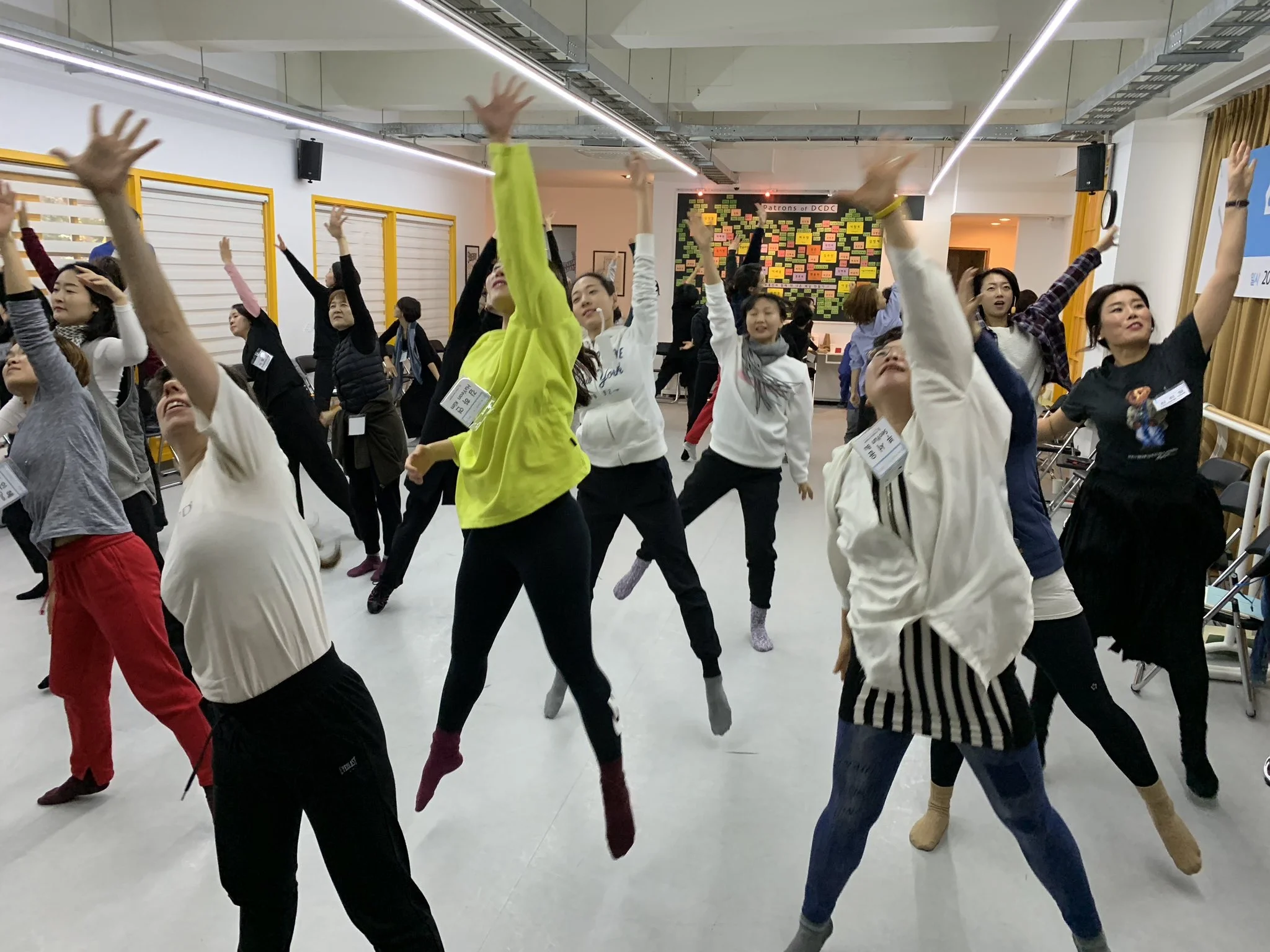This autumn, I was pleased to be invited by Dance for PD ® founding teacher David Leventhal, to collaborate with him on a CPD programme in Seoul, South Korea. Over six days we offered introductory and advanced professional development in dance for dementia and Parkinson’s, for artists affiliated with the Dancers’ Career Development Centre (DCDC) in Seoul.
Taking my practice, from a place / location / situation in which I have been exploring, moving, thinking, delving and discussing for the last 10 years, and placing it outside of all the usual cultural and practical understanding I’m surrounded by in the UK, was both a lesson in communication and a challenge of my unvoiced bias or assumptions.
I have been leading professional development based on dance and Parkinson’s practice since 2011. However, it is the experience of taking this out of the cultural context of the UK that led me to reflect once again on several things we take for granted in the community / participatory / socially-engaged dance sector in the UK that are rooted in our social-cultural perspective:
-
In the UK, a foundation of knowledge exists around inclusive creative practice
-
There is an acknowledgement of the roots of our community dance practice from a political context – siting within our social and cultural history
-
We therefore engage with the values of justice, equality, accessibility and these values are played out in our approaches to leading dance – including creative co-ownership
-
As a result of this we are mindful of our use of language, the challenge of power-dynamics that result from physical demonstration, the way our resources are shaped to support dancers and can be a tool for inclusion
-
We acknowledge a powerful aesthetic that comes from uniqueness
Aren’t we lucky to have such a wonderful creative foundation from which to practice our art!
In Seoul, it was interesting to bring such a specific practice as dance with Parkinson’s, to a group of artists unfamiliar with the basic principles of community dance I take for granted. At the centre of my practice with dancers who have Parkinson’s, is the UK perspective and socio-political understanding of inclusion, one that it would be ignorant to assume is understood or adhered to in other countries.
In Seoul – across the boundaries of translation through an interpreter – we discussed with dance artists new to this practice how the dancers in the classes that they will eventually lead might gain a sense of ownership and agency through a co-creative approach. The artists took on this challenging concept with great enthusiasm, their leadership skills demonstrating a great respect and willingness to engage with the values of co-creation. Yet within their dance experience this was not an approach they had frequently encountered. With a directive approach to leadership in dance being so deeply rooted in theirs and many dancers training, these artists acknowledged in our reflective sharing, that they found it very difficult to formulate tasks and explorations, rather than setting exercises and sequences.
This highlighted a few of very important reflective questions for me:
-
If UK or US artists are asked to lead training for international artists based on a model that is so culturally situated and socially relevant in our home countries, does it matter if what we consider the core values of this work (equality, acceptance, inclusion, community) are not prominent social or cultural values in the country we are working in?
-
If it does matter, then how do we share these core values of artistic practice first, rather than just falling to the specificity of health considerations? And if it doesn’t matter, then how do we work from within these values and feel comfortable in the notion that we are at least making dance accessible in some way to a community that wouldn’t usually access it?
-
How do we maintain clear and manageable parameters around our CPD teaching in other countries, to ensure that the message of social and inclusive ideals do not become confusing to the detriment of the dance practice itself?
Dance for PD ® are leading the way in bringing a model of practice for dancers with Parkinson’s to a huge, international audience of dance artists, and doing so with the respect and understanding of the cultural misinterpretation and miscommunication that can happen with the barriers mentioned above. First and foremost, this is possible due to the deeply generous, sharing of experience that takes place in this CPD model, and secondly due to the constantly curious and inquisitive nature of the work, which means that even as a leader of this training, I am always seeking to understand it afresh through the eyes / context of a new location and different dancers, as I know David and the Dance for PD ® team are also.
The questions above go unanswered for now; they remain pertinent to my evolution as an artist and I therefore vow to remain constantly curious! Which I feel confident will ensure that this practice is never approached with a top down hierarchy to professional development leadership. There is no such thing as an expert!


